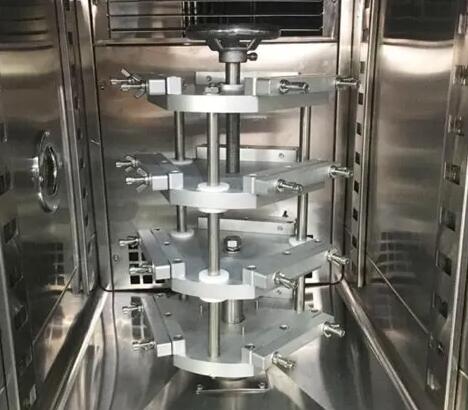
NewsInformation Center
How to set the time and temperature of vacuum drying oven?
2022/07/29
The vacuum drying oven is mainly used to dry some materials, due to the different materials, the drying time and corresponding temperature are also different, so it requires the staff to make relevant settings for the equipment before operation.
Drying oven use environment requirements:
1. Temperature: 5~40℃ b) Relative humidity: ≤85%rh c) Power supply voltage: ac220v±10% 50hz d) No strong vibration and corrosive gas influence around
After the commissioning of vacuum degree, you can do the following operations:
2. Open the power supply of vacuum box, the power indicator should be on (6090 and 6210 type should open the switch of temperature control instrument respectively), the temperature control instrument will be self-tested, the pv screen will show the measured temperature inside the working chamber, the sv screen will show the temperature set at the factory. Temperature control instrument at and heat and other lights should be on, indicating that the instrument into the working state of heating.


3. modify the set temperature 1. press the function key (set) of the temperature controller; pv screen display sp characters, the key head button can be used to modify the set temperature (6090 and 6210 type for 2 and 3 instruments should be set to modify, the following similar).
After the modification, press the set button again, the pv screen will display the st character and set the timing time. If you do not use the timer function, still let it press the set key again, so that the pv screen shows the studio temperature and the sv screen shows the new set temperature. The instrument at and heat lights up, then the instrument re-enter the working state of heating.
4. When the temperature inside the working room is close to the set temperature, the heat light is on and off, indicating that the heating enters the pid adjustment stage, the instrument sometimes measures the temperature more than the set temperature, sometimes lower than the set temperature is a normal phenomenon. When the measured temperature is close to or equal to the set temperature, then wait for 1~2h after the studio enters the constant temperature state, the goods enter the drying stage.
5. When the required temperature is low, the second setting method can be used, such as the required working temperature of 70℃, set 60℃ for the first time, and then set 70℃ for the second time after the temperature overshoot starts to return, so that the temperature overshoot phenomenon can be reduced or even eliminated and enter the constant temperature as soon as possible.
e) When the items are dried, turn off the power, and if the cooling is accelerated, open the venting valve to make the vacuum degree 0, and then open the door of the box for about 5 minutes. If the humidity of the dry goods in the working room is large, the water vapor generated will affect the performance of the vacuum pump, so it is recommended to put a "drying/filter" in series between the drying box and the vacuum pump.
Standard International Group (HK) HD-E804 blast vacuum drying oven is suitable for teaching, scientific research, medicine, chemical, food and environmental protection, etc., to dry various small amount of samples under vacuum. It adopts digital display to show the temperature of the working chamber or the set temperature value, which is sensitive and easy to read. The working chamber is equipped with pressure-resistant and heat-resistant glass viewable window, which can observe the drying situation of samples at any time. And the whole machine is small in size, light in weight, energy-saving, high in thermal efficiency, flexible in operation and also very convenient.
Translated with www.DeepL.com/Translator (free version)
Previous: Shock: Tensile testing machines can do more than you thought
N e x t : Abrasion resistance test and influencing factors of woven fabrics



